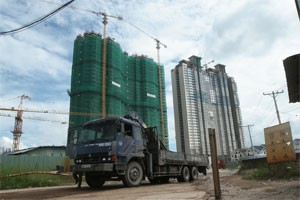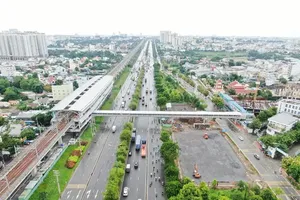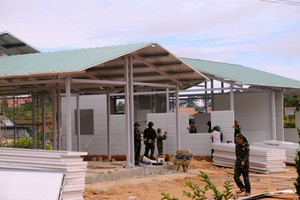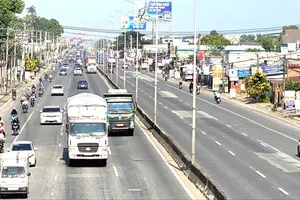The deficit between land prices frame and the market price caused corruption, while land auction procedures remain inadequate, officials say.

Ta Xuan Trinh, a senior official of the Hanoi People’s Commission, said land prices regulated by the commission was equal to less than 10 percent of the market price.
The highest regulated price is VND81 million (US$4,050) per square meters, while the market price for lands in a similar area reaches VND500 million or even VND1 billion, he said.
The Hanoi People’s Commission made more than VND1.2 trillion ($60 million) from 17 property auctions worth VND2.2 trillion this year, Trinh said, without explaining why the commission do not have the remainders so far.
“Land prices bidden in the auctions are always higher than ones regulated in the commission’s land price frame. For example, a land with a price of around VND4 million ($200) per square meters will be bidden at the rate of more than VND30 million,” he said, adding the huge gap prompts corruptions.
Property policies is still more about to boost economic development than social justice after 4 amendments to the Land Law from 1998 to 2008, noticed Le Duc Thinh, head of the Rural Institution, under the Institute of Policy and Strategy for Agriculture and Rural Development.
Analysts said it is necessary to reconsider the land price frame as it fails to make any effect to the market price. People tend to shun the frame, trading lands with their own prices.
“Land prices regulated by the government are always different from the market price. People set low prices to evade taxes, making losses to the government and leaving provincial authorities struggling to supervise property trading,” said Hoang Van An, director of the Tuyen Quang Province Resources and Environment Department.
According to the Ministry of Resources and Environment, the gap between the regulated prices and the market prices came from the fact that the land price frame was set up on August annually and released on the next year. The frame was then getting out-of-date, extending the time for property projects’ land clearance.
Bui Ngoc Tuan, head of the Department of Economy and Land Fund Development, said the Ministry of Resources and Environment was planning on the releasing time for the land price frame.
Land assessment and auction procedures are also among issues that relevant units are coping with. Officials at many provinces’ resources and environment department complaint there was confusion about the connection between the resources and environment department, the judiciary department and the financial department.
“The resources and environment department is in charge of setting up land price frames, but detailed prices is made by the financial department. The former is also responsible for measuring and doing paperwork for land auctions, which will then be run by the judiciary department,” said Pham Mai Thi, deputy director of the Son La Province Resources and Environment Department.
























